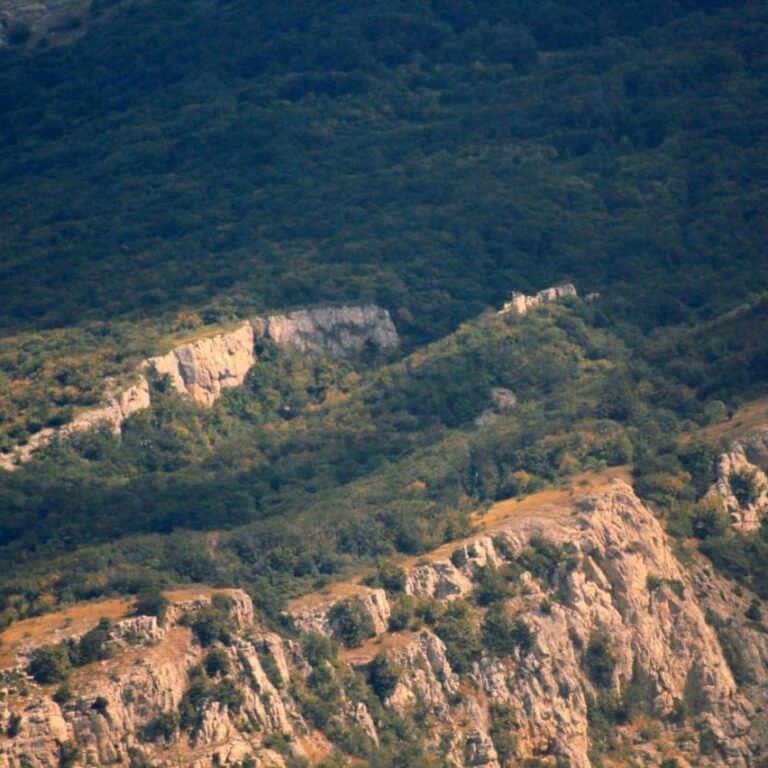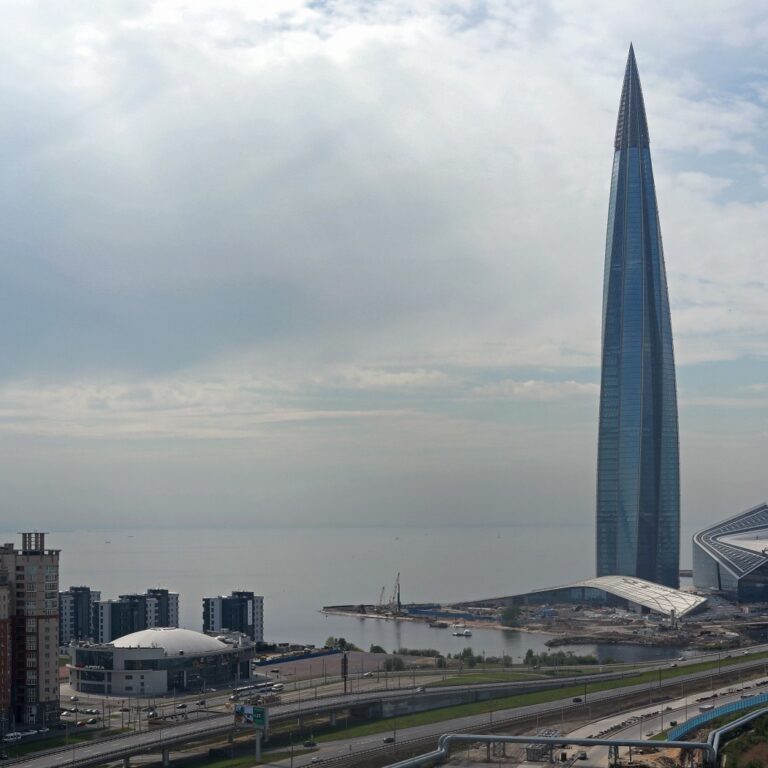The illegal “Ministry of Construction and Architecture of Crimea” said that the dismantling of the unfinished nuclear power plant in the town of Shchyolkino is planned to be completed by
December 2023. It is noted that the dismantling of the engine room is not carried out due to court proceedings against the facility over the cancellation of “state registration”.
“Due to the fact that it is not possible to complete the dismantling activities in 2022, the deadline for execution of the order has been extended to December 31, 2023,” – the occupying “authorities” said.

The history of the development of the Crimean nuclear power plant dates back to 1968,
when the first design surveys were carried out. Construction began in 1975. The plant was supposed to supply electricity to the entire Crimean peninsula, as well as create the groundwork for subsequent development of industry of the region – metallurgy, machine building,
chemical industry. Specialists, who were supposed to the city of Shchukin was built practically from scratch on the coast of the Sea of Azov.
The city of Shchyolkino was built practically from scratch on the shore of the Sea of Azov. Unfavourable economic situation in the USSR and a catastrophic accident at the fourth unit of the Chernobyl nuclear power plant on April 26, 1986 led to the suspension of construction by 1987, and in 1989 the final decision was taken not to start the plant. From then on, the plant facilities were unprotected and property was looted, structures were destroyed and rendered unusable for
further use.
In studying the reasons for the project’s closure, we should separately note the seismicity of the Crimean nuclear power plant site, which was an important argument against the construction of the plant. In 1983, the Chief Directorate of Geodesy and Cartography under the USSR Council of Ministers was instructed to organize geodetic monitoring of the crustal movements of the Crimean NPP industrial site and adjacent territory.
This was done in order to verify rumours about a fault running through the construction site. A high-precision geodetic network was laid and the data was double-checked for four years. The result was that the difference in crustal movement between the northern and southern parts of the construction site was recorded at 45mm. A similar crustal movement occurred in the Spitak zone, where a devastating earthquake of up to 10 magnitude (on the MSK-64 scale) occurred in 1988.
From this study it can be said that the opinion of a fault is not far from the truth. No information has been found on how many points the Crimean NPP was designed for. The standard designs of nuclear power plants at the time, with VVER-1000 reactors, were designed for a maximum earthquake of magnitude 6. If we take a look at modern construction standards (SP 14.13330.2018 “Construction in seismic areas”), we will see that the city of Shchelkino is located in a zone with an intensity of an earthquake of magnitude 8. As for modern NPP, according to SP 151.13330.2012 “Engineering Surveying for Locating, Designing and Construction of Nuclear Power Plants. Engineering Surveys for the Development of Pre-Design Documentation (Site Selection and Selection of NPP Site)”, it is not permitted to locate a nuclear power plant on a site with a maximum design earthquake intensity of 9 on the MSK-64 scale. With an intensity of 7, the site is considered to be unfavourable and NPP siting is restricted. As a result, the seismicity of the site was a real weakness of the Crimean NPP. In the event of completion, the plant’s structures might not have been able to withstand a major earthquake, which could or would happen within the next 10 years.
There have been repeated attempts in Ukraine to find uses for these expensive facilities. In 2006, the territory of a former nuclear power plant was selected as one of the possible locations for a pilot industrial park project. In 2010-2011, there was a plan to build a combined cycle power plant in eastern Crimea, near Shelkino, with the participation of Chinese investors. a feasibility study was developed and even government guarantees were given for lending to the project.
Construction of the plant with a capacity of up to 800 megawatts was planned to start in 2012, but the project was suspended. After Russia seized Crimea’s territory, the illegal Crimean “government” practically ignored the problems of the unfinished nuclear power plant until 2021, when it decided to dismantle it and subsequently set up an investment site at the plant, although no one knows what kind of investment site it will be. There is an opinion and thought about the possible start of extraction of minerals near the town of Shchyolkino, namely gas, oil and gas condensate.
According to V. Griguletsky, Doctor of Technical Sciences, Professor, Honoured Worker of Oil of the USSR, Honoured Scientist of the RF (Gubkin Russian State University of Oil and Gas (RGGU)), there is a possibility of commercial production of oil and gas in the mentioned area. M. Gubkin) “as of 01.01.2020, more than 1 thousand exploratory, prospecting and operating oil and gas wells have been drilled onshore Kerch Peninsula (for the period 1940 – 1990). Half of these wells (500-600 pcs.) require liquidation works as they are ecologically hazardous, polluting the environment (especially near settlements, villages, towns). Part of the wells (100-150 pcs.) can be restored by capital repair”.
V. Griguletsky states that “the results of scientific research and geological prospecting works of the last 50 years allowed to explore on the territory of the Kerch peninsula as of January 01, 2015 more than 30 gas deposits with the reserves of about 47 billion m3 , more than 10 oil deposits with the reserves of about 2,8 million tons and seven gas condensate deposits with the total reserves of more than 5 million tons. Marked features of oil and gas content in different geological deposits of the Kerch Peninsula, proving the high potential of discovering large oil, gas and gas condensate deposits onshore and offshore Crimea. The future of onshore oil production in the Kerch Bay is primarily linked to oil production from the upper, middle and lower Maikop. The Maikop deposits in the Crimea are up to 3,000 metres thick and contain huge quantities of high-quality Crimean oil.
Nowhere in the world are such thick Maikop deposits as on the Kerch Peninsula, the Black Sea and the Sea of Azov. Academician I.M.Gubkin noted the presence of oil in low-permeability shale rock formations as early as 1932. In his fundamental monograph “Doctrine of Oil”, Academician I.M.Gubkin stated the following: “… but some clays, as well as some shale rocks, in the composition of which the organic material plays a significant role, i.e. those rocks, which we attributed to caustobiolites, play a special role in formation of oil deposits. They are the parent rock, the source material, in the process of changing which – in the so-called bituminization process – oil and hydrocarbon gases arise.
Oil in such bituminous rocks – bituminous clays and bituminous shales – is in a dispersed state, distributed over the entire rock mass; it is there in enormous quantities, but it cannot be extracted from there by the methods used in oil extraction from sands and other large-porous rocks”. The future of onshore oil production in the Kerch Peninsula requires new technology, equipment and materials in the development of low-permeability shale deposits (Upper, Middle and Lower Maikop).
Future onshore oil production in the Crimea using new technology, equipment and materials could produce 5.0 to 10.0 million tonnes of oil per year. The low-permeability shale formations of the Lower, Middle and Upper Maikop have adequate resources and reserves. In recent years, the US, Canada and other major oil and gas producing countries have paid much attention to the development and production of hydrocarbons (oil, gas) from low-permeability shale formations.
The future of gas production in the Crimea will be determined by a significant increase in onshore and offshore production”. Thus, we can conclude that commercial production of gas and oil in the said area is possible with the use of new technology, equipment and materials when developing low-permeability shale deposits, and based on the existing world practice (USA, Canada) we are talking about one of the advanced methods – hydraulic fracturing technology (fracturing, the so-called fracking). We shall not dwell on the mentioned method, but have a look at one of the main hazards of hydrocarbon production with the help of hydraulic fracturing (fracking).
With increasing productivity of oil, gas and gas condensate production with the use of hydraulic fracturing, there are a lot of risks and threats to the flora and fauna of the region where the extraction takes place. One of the consequences of hydraulic fracturing for the environment is earthquakes.
The injection of wastewater into deep oil and gas wells can cause earthquakes, albeit weak ones. Nevertheless, earthquakes can pose a threat to human safety. Small earthquakes (magnitude less than 1) are intentionally caused by hydraulic fracturing to increase permeability, but this is also associated with stronger earthquakes. In the United States, the strongest earthquake known to have been caused by fracking was a magnitude 4 earthquake in Texas.
The devastating effects of fracking on the environment are a threat to wildlife. Fracking can endanger fish and birds in many different ways. Streams and ponds are polluted as a result of fracking fluid or wastewater spills. Even harmless substances can cause health problems in animals exposed to them, preventing them from reproducing.
According to a 2011 study of 632 compounds used in these processes, many chemicals used in fracking, drilling and processing pose risks to humans and other animals. And of course there is a direct threat to the health of people living in areas that are located in areas where hydrocarbons are extracted by hydraulic fracturing. According to a new study, fracking has been linked to premature births, high-risk pregnancies, asthma, migraine headaches, exhaustion, nasal and sinus symptoms and skin problems over the past decade.
Due to the sanctions imposed on russia, the method was unavailable to russian hydrocarbon producers, but in 2016, Gazprom Neft announced the available development of the fracturing method and its successful application on horizontal wells in the Yuzhno-Priobskoye field in the Khanty-Mansi Autonomous District.
Thus, the development of projects by illegal “authorities” in Crimea directly points to a greedy desire to continue plundering Ukraine’s natural reserves, without taking into account the threats posed by the use of the technologies described to increase hydrocarbon production, without taking into account what may pollute groundwater, pollute surface water, degrade natural landscapes and endanger the wildlife and human population of the region, and one of the main threats is an earthquake, as we have not accidentally pointed out in the Crimean AE area.
Author of the material: expert-correspondent of the ARC, Leo Grahl







